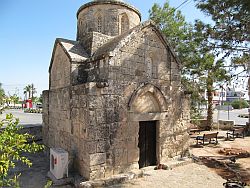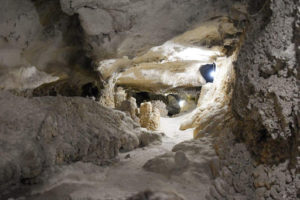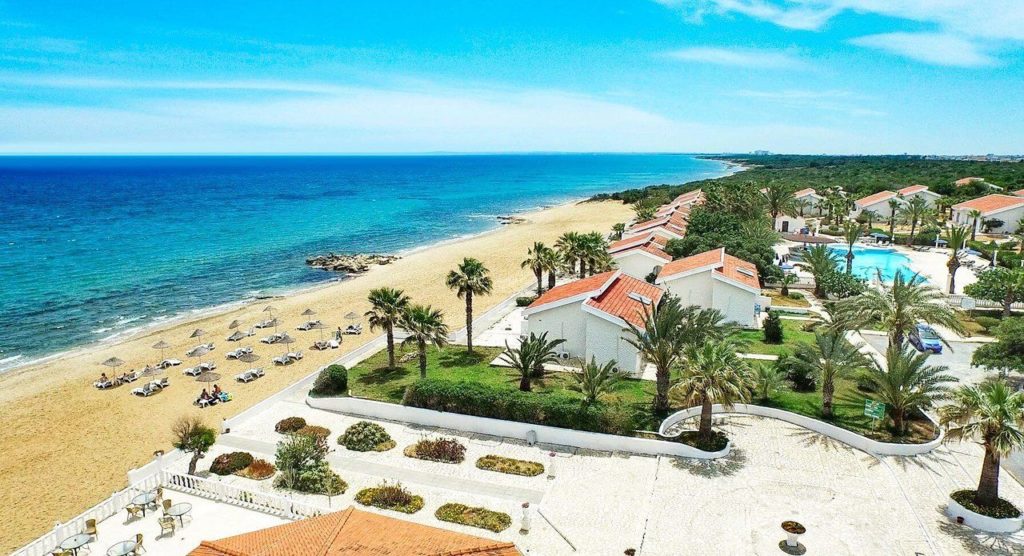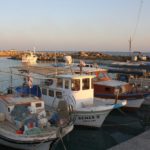The town of Iskele, (also known as Yeni Iskele or Trikomo), is located on the south east coastal area of Northern Cyprus and on the main road which heads towards the Karpaz Peninsula area. It’s close to the harbour town of Boğaz, which is a very pretty old fishing village that still retains some of its authenticity whilst also being able to accommodate tourism.
Iskele can be reached by the Gecitkale road via Lefkoşa, turn left at the coastal junction and after just a few miles you will find the town. Alternatively, for a more scenic journey from Kyrenia, take the north west coast road via Esentepe turning inland at Mersinlik or Kaplıca, following the signs for Iskele and Boğaz.
 Yeni ‘New’ Iskele is so called due to the influx of Turkish Cypriot inhabitants having moved there from a district of the same name in Larnaca, located in the south of the island, during the intervention of 1974. It is also the birthplace of the infamous George Grivas, a Greek Cypriot colonel of the EOKA operation (Ethnikí Orgánosis Kypríon Agonistós or National Organization of Cypriot Fighters), an outspoken promoter of ENOSIS (Cyprus’ union with Greece). Despite his considerable influence, he died six months prior to the intervention and subsequent final division of Cyprus in 1974.
Yeni ‘New’ Iskele is so called due to the influx of Turkish Cypriot inhabitants having moved there from a district of the same name in Larnaca, located in the south of the island, during the intervention of 1974. It is also the birthplace of the infamous George Grivas, a Greek Cypriot colonel of the EOKA operation (Ethnikí Orgánosis Kypríon Agonistós or National Organization of Cypriot Fighters), an outspoken promoter of ENOSIS (Cyprus’ union with Greece). Despite his considerable influence, he died six months prior to the intervention and subsequent final division of Cyprus in 1974.
Historically Iskele is an important area with the town of Boğaz also having originally been a Turkish settlement, and it is also well known for its pomegranate growing. In the town centre of Iskele you will find a small Dominican chapel called Ayios Iakovos, which was originally built around the 15th century. History tells us that Queen Marie of Romania was so taken with the chapel that she commissioned a replica to be made for her family’s use back home in Romania.
Iskele is also the venue for some important regional festivals ın North Cyprus such as the Iskele International Folk Dance Festival, normally held in June every year, featuring visiting nations competing for the best folk dance group title; and also the Iskele Festival which is held yearly in June/July time, and which hosts competitions, displays and plenty of outdoor cooking!
From Iskele town, turning further inland on the main Gectikale road, you will find the church of Panayia Theotokos, a 12th century domed building which has been restored in recent years and reopened to the public as an Icon Museum. Most of the icons in the church are from fairly modern times, and they are not just from Iskele but from all over the island. You can see some stunning frescoes at the museum too, in particular a painting of Christ in the domed ceiling, and one of the Virgin Mary located in the apse, which was actually an addition in the 15th century of Frankish-Byzantium style.
Further inland on the Gecitkale road, heading back towards Lefkosa, you can find the village of Cinarli if you turn right at the town of Gecitkale. Cinarli, located in the foothills of the Beşparmak Mountains, is home to

Incirli Cave (Incirli meaning fig), the biggest natural cave in North Cyprus. Its passage runs for around 100 metres and contains both stalactites and stalagmites.
The cave’s discovery was said to have come about when villagers followed poachers who had stolen some goats, and when the tracks stopped mysteriously at the nearby fig tree they were baffled. The same thing happened again, and the police lay in wait and found that the poachers disappeared by the tree and the cave was then uncovered. The poachers were never found, and it is possible that the passage has an exit, but no one has ever discovered where this may be. In more recent times it is also said that EOKA members used the cave as a refuge in the 50’s and 60’s. Read another version in our feature article!
In 1995 the cave was opened to the public for a small fee, and is open to view on Sundays at the time of writing, but it is also possible to ask for it to be opened by speaking to the town’s local Muhtar.
To find out more about the surrounding towns and areas around Iskele, such as Boğaz, Mehmetcik and Bafra, please click on the appropriate links.




2 Comments
Can you tell me about Bulusia Monastery outside the village of AğIıllar. There was a plaque but it seems to have gone before it was full of holes so could not read it.
Regards
Lil Simmons
Dear sirs,
Is there any interest to purchase pre74 Greek Cypriot title deeds ?